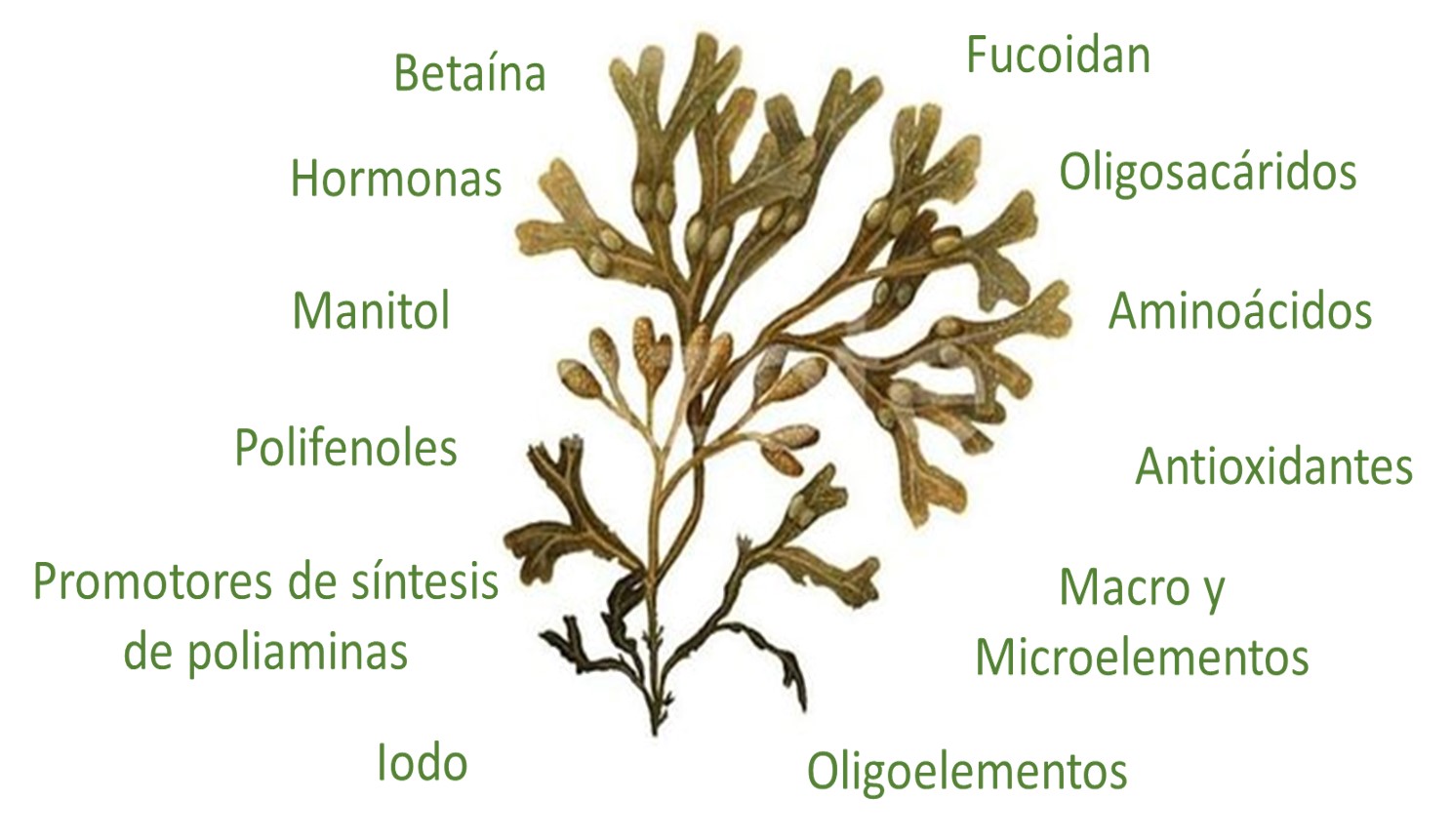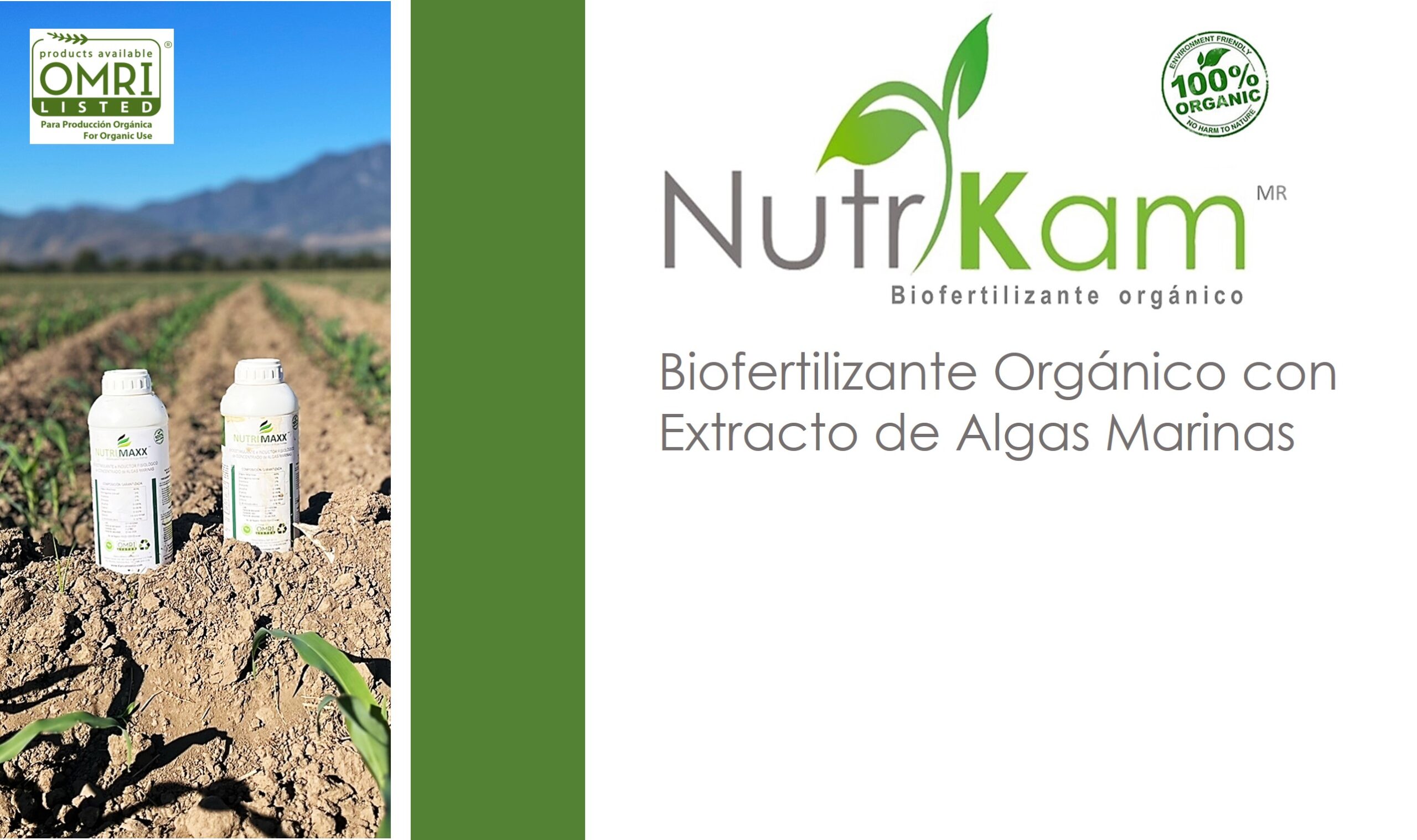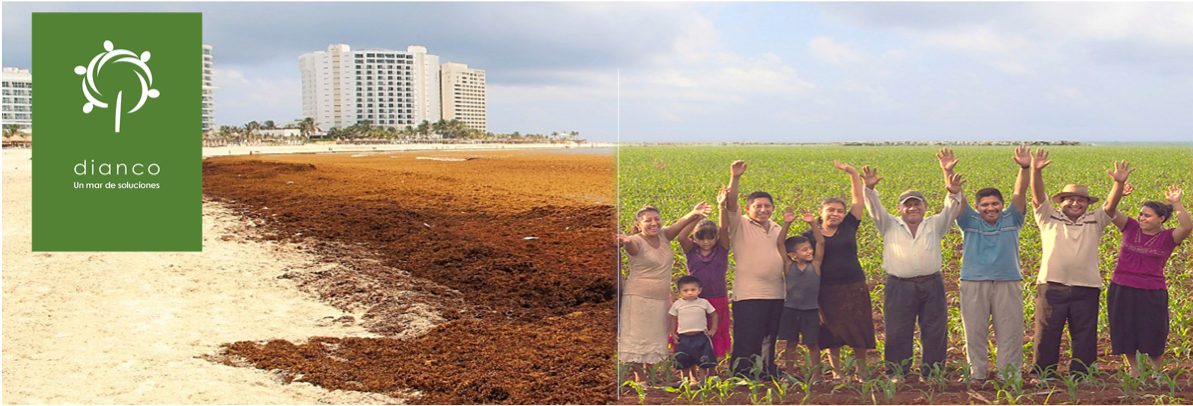
Dianco México
We are a Mexican company made up of entrepreneurs, environmentalists, engieneers, biotechnicians,agronomists, and scientists specialized in phycology - which is the discipline that studies algae -.
We transform the thousands of tones of sargassum that invade Quintana Roo shores (as a consequence of Climate Change), to produce 10,000 tons of biofertilizers and bioestimulants per month.
We are the only company that produces organic fertilizers at an industrial scale in Latin America.


Our innovation
With a process that is unique in the world, as well as patented, automatized, 100% sustainable, zero waste, and with food grade quality, we extract 100% of nutrients of sargassum, removing salts, heavy metals (well below they allowed limit), and also recovering sand to be brought back to the beach.

Figures
- 150,000 tons of sargassum transformed in a year (1 ton in 5 minutes)
- 100% of sargassum (wet and dried) is used
- 0% waste
- 95% of sand is recovered
- 2,600 tns. of sand per year could be brought back to the beach
- 70% of water of our process is reused
- 10,000 tns. of biofertilizers are produced on a monthly basis
- 2,000,000 of small crop owners can be benefited per month
- 5,000,000 hectares could replace agrochemical products with organic fertilizer
- Millions of trees won't be cut down with our cellulose production(2nd stage)


We prevent more damage to the environment, and contribute to the image of the beaches with tourists, to avoid leachate to filtrate into the aquifer system and the damages caused in the health of the people by avoiding sargassum to the thrown into the jungle.
We cover the urgent organic needs of every producer: Certainty and Profitability.
Certainty and assurance of higher quality of soil and crops, of more production and of supply at a larger scale; all of this, at lower prices.


Mission
Create products that are sustainable, of high quality and at lower prices, that contribute both to the success of our customers and to the rescue of our enviornment. It is about always being a scientific and conscious company.
Vision
Be a role model company at international level at environmental protection and productivity with social value.
Philosophy
Every problem is an opportunity.

Thank you...

SARGASSUM... From problem to opportunity.
What is Sargassum?
Sargassum is large seaweed (algae). It’s about aquatic plants floating from the Sargassum genus that are mostly found in tropical areas and, mainly in the Caribbean beaches. It grows fastly, duplicating its volume in less than 18 days in ideal conditions.

Why is there so much Sargassum?
The Ocean Atlantic Current is made of warmer water that flows towards the north of the Earth after receiving heat in the tropics and in the Equator (orange line to the right), and of colder water that flows to the south of the Earth once it has been cooled down in the North Pole (blue line to the right).
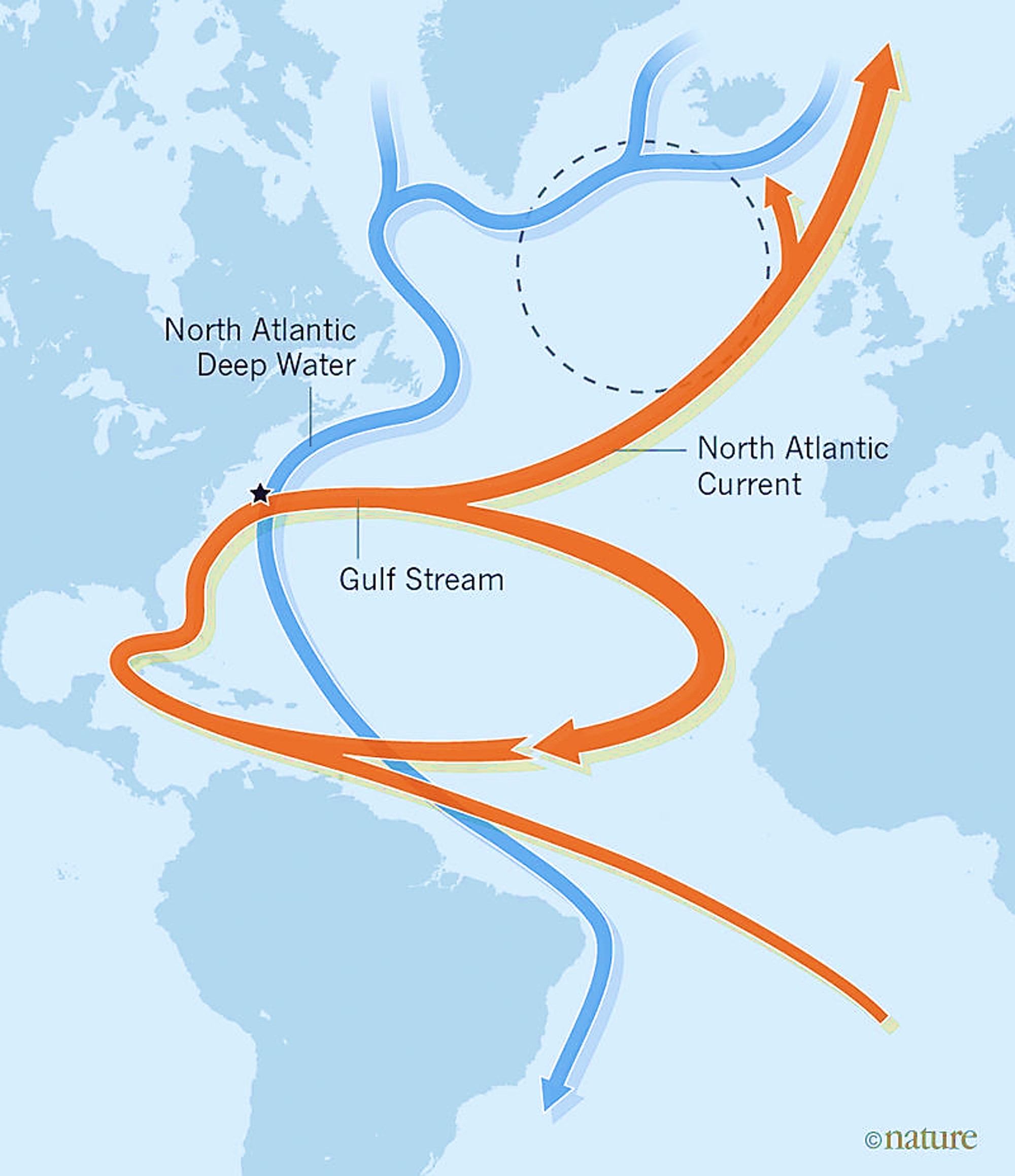

Glaciers are melting because of Climate Change, as well as artic ice. The water resulting from the melting ends in the ocean due to rivers.
Evidence shows that a change in the salinity balance is causing the warm water to move slower towards the north, reaching higher temperatures and «parking» in the Gulf sub-current, directly in contact with the Caribbean.
While «parked», that water doesn’t only get warmer but also receives more nutrients that flow into the Atlantic ocean as run off from the Amazon (Brazil) and Mississippi (United States) rivers, where they circulate more than usual, causing what can be called perfect conditoins for Sargassum to continue growing exponentially!


Sargassum arriving to the shores is not a problem, the large and growing quantities are!
It has become a serious ecological and socio-economic problem for countries in the Caribbean like Mexico, Belize, Honduras, Jamaica, Cuba, Dominican Republic, Barbados, as well as many country islands like Bonaire and San Andrés Isla.
Will it ever stop arriving?
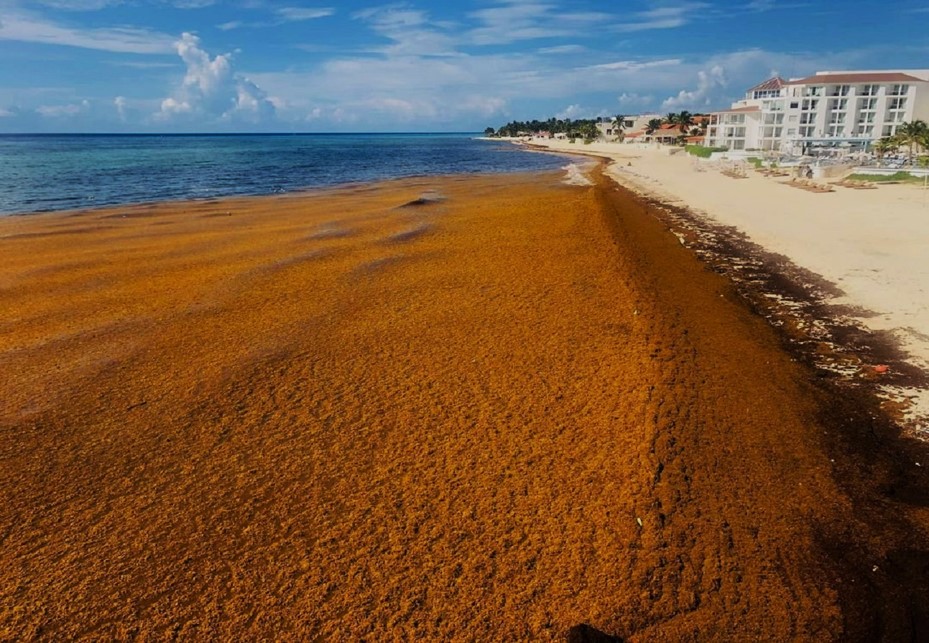
This means that, while we make a global agreement by all the people in the planet to act accordingly,
Will Sargassum continue arriving and in larger quantities every year?
Unfortunately, YES.
What would need to happen for warm water to recover its original speed while going northwards?
Recover the salinity balance of the ocean.
How could that balance be recovered?
Stopping the glaciers and artic ice melting.
How could this melting be stopped?
Stopping Climate Change.
How could we stop Climate Change?
– Stop emitting greenhouse gasses to the atmosphere
– Having 3/4 of World’s population stop eating animal products
– Reforesting 2/3 parts of the plant, and
– Not cutting down even one single tree more.

It brings larger problems
- It stinks
- Prevents water oxygenation
- Changes the color of the water from turquoise to brownish
- Emits gasses when decomposing in the beach
- It tangles in our legs
- It scares tourism and affects country and state economy significatly
- It affects seagrass and sea meadows, causing erosion
- The death of fish and proliferation of bacteria (due to large quantities of sargassum arriving to the shores, phosphorus is now 1000 times fold resulting in more algae than coral reefs, and in brown tide – brownish water – reducing the oxygen level in the water)
But… it also has great benefits!
- It has a great ability to develop and grow in tropical condictions, providing it with extraordinary vitality, energy and structural strength
- Very large photosynthesis capacity and efficiency
- Amazing speed to process toxical components
- High production and storage of components, simulating the fast reproduction of its different growing points
Sustainability - under construction
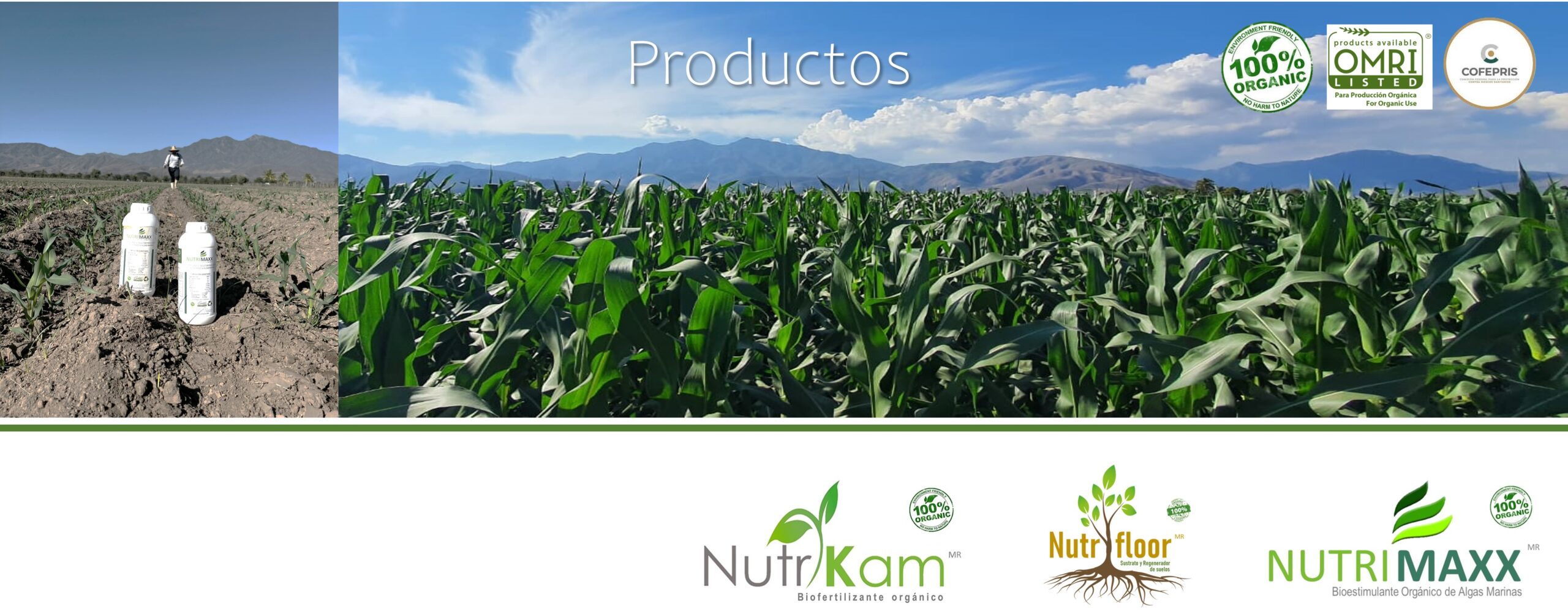
- Excellent anti-stressing. Promotes growth and development of steams, leaves, buds and roots.
- Increases flowering, mooring and growth of steams and fruits.
- Increases the resistance capability of plants in adverse conditions (weather, plagues, diseases, excess or lack of water).
- Provides microelements that in soil or leave fertilization are not provided or are not enough.
- Contributes to a faster absorption and transfer of fertilizers.
- Improves soil conditions and promote the growth of roots and absorbent hair enabling a better absorption of fertilizers.



